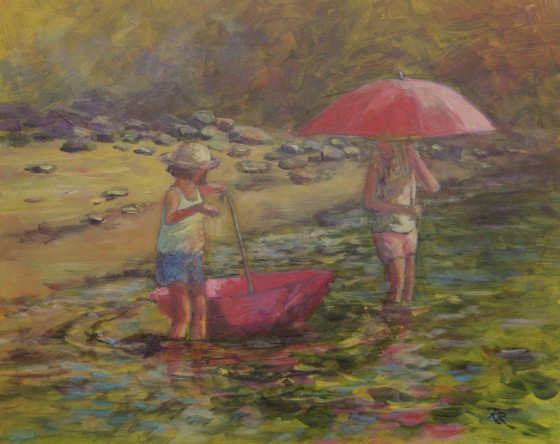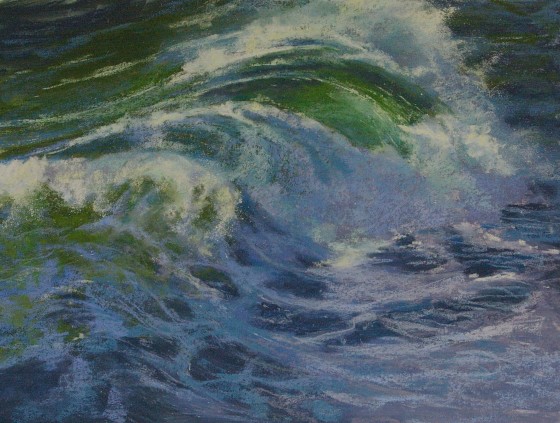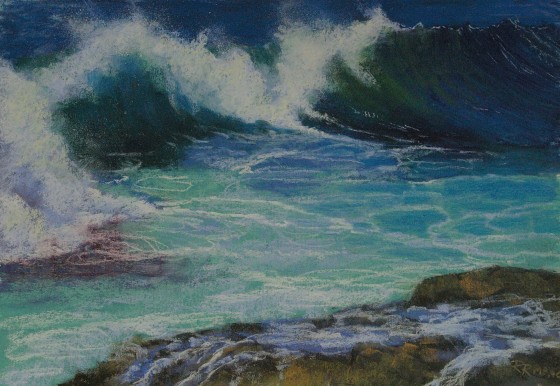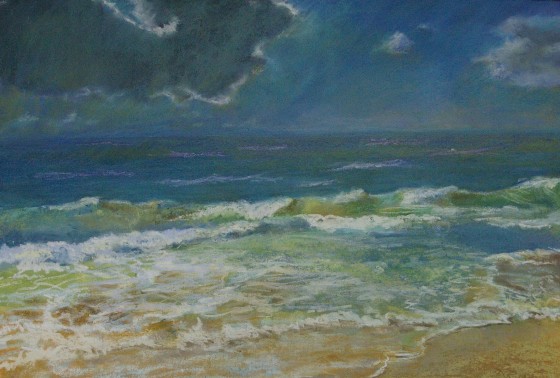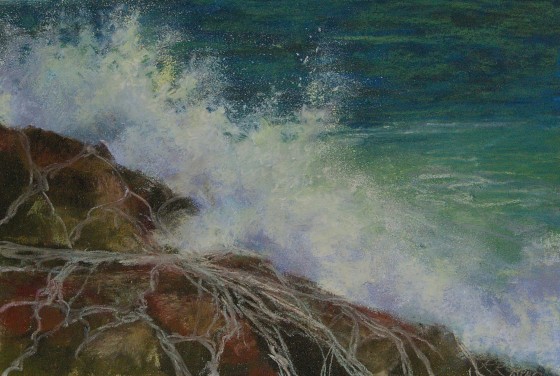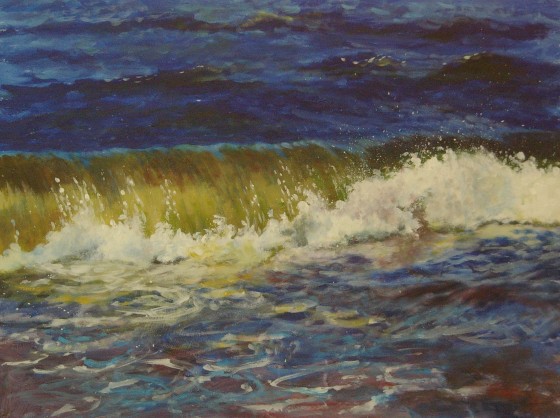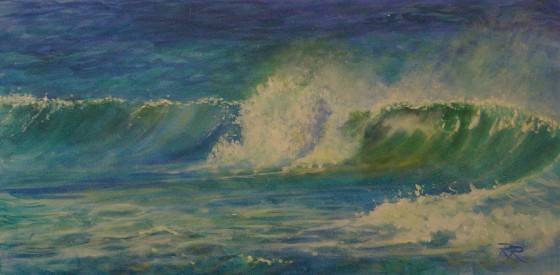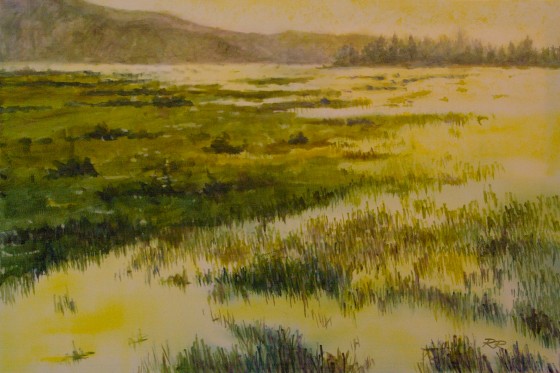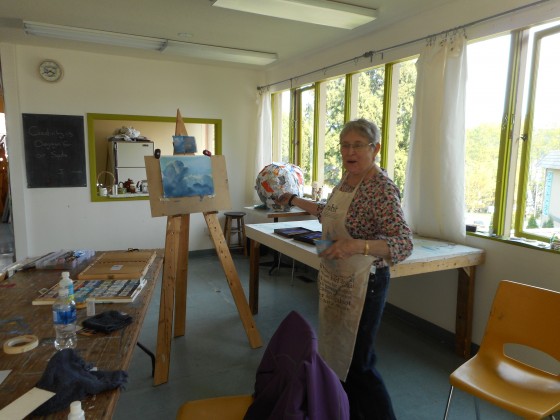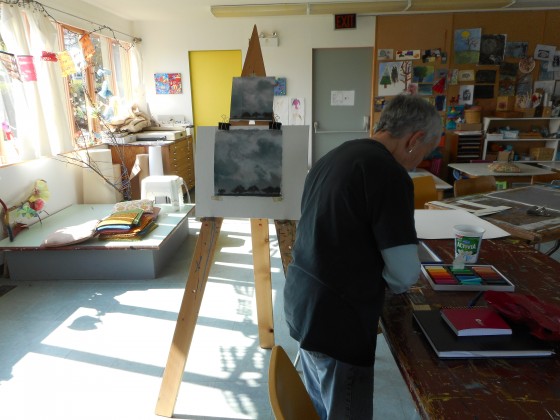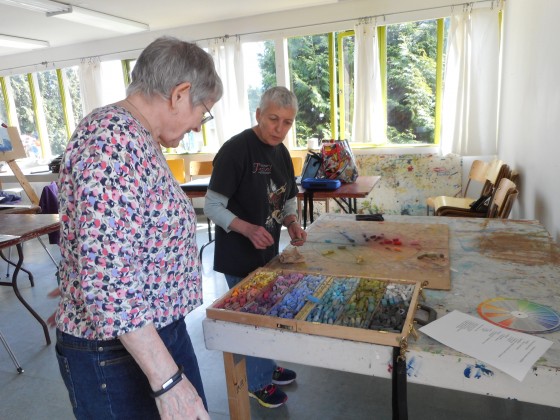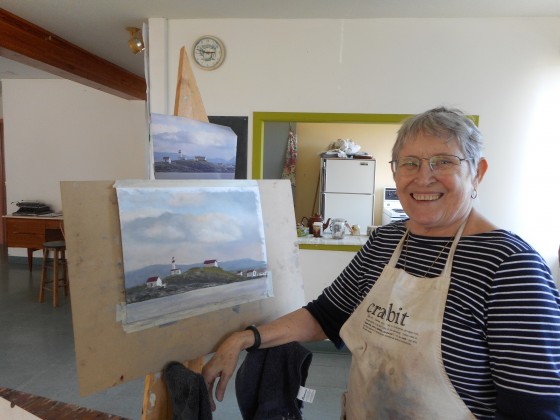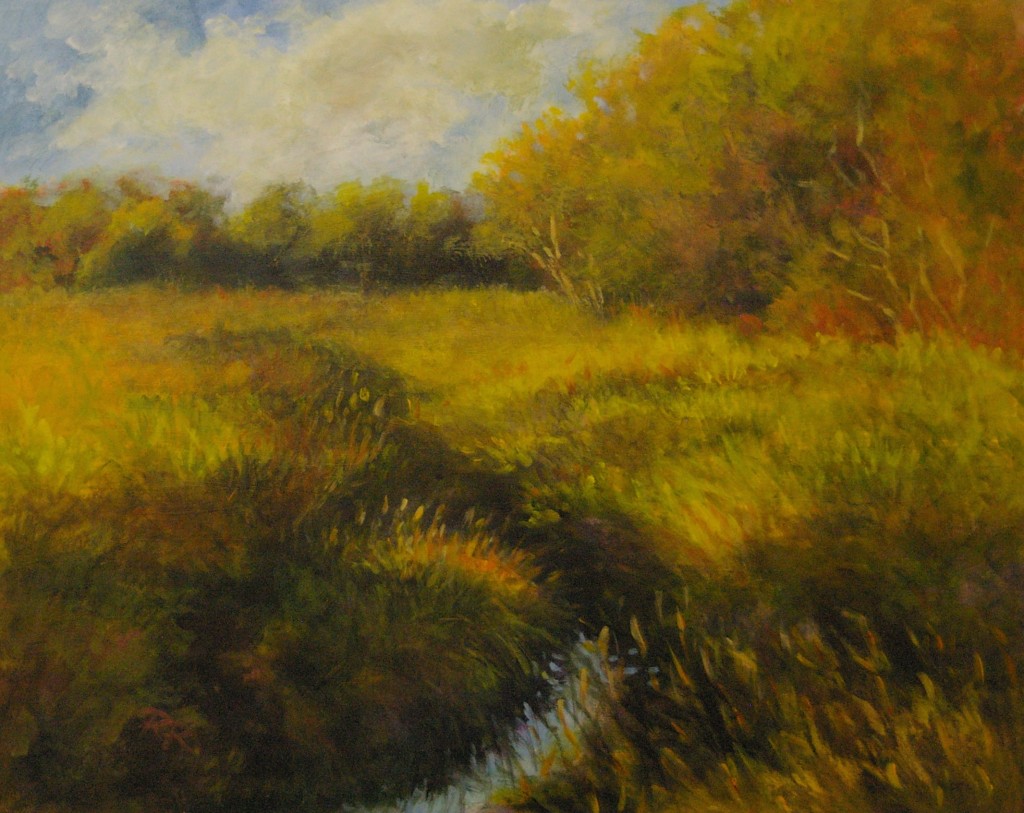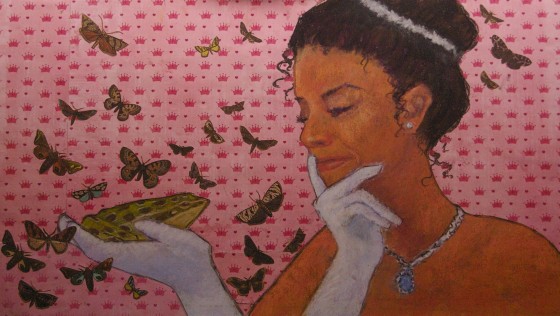Late last summer I was asked to take on a commission painting by a patron who had admired my recent paintings of beach scenes. She requested that I undertake a double figure portrait of her two granddaughters in acrylic. We discussed the approach and style, agreeing that an informal setting such as the beach, and an impressionistic style, would suit both the patron and the subjects. The resulting painting was to be a Christmas gift to the patron's daughter (and her family), so obviously the children knew about it--but would not see the finished work until Christmas. As a result, I spent a very enjoyable hour a few weeks later photographing the young sisters as they interacted with each other and some props I had provided (buckets, umbrellas, beach towels etc.) in the small cove just below their grandparents' house.
The sisters (10 and 8 in age) were utterly charming and obviously the best of friends. They interacted imaginatively and naturally with the props, and I just circled them, listening in, watching, and snapping away, as they played. None of the poses were "directed," as I wanted to observe how they related to each other without my intervention. One of the hardest things about commissioned portraits of people with whom you aren't familiar is capturing not only a likeness but the person's character. Long "from life" sessions were not an option here (the girls do not live locally), so I did my best to maximize my photo shoot and got about a hundred shots within the time frame we had available.
I reviewed the photos and selected several that I felt represented the girls' characters and the relationship between them best. One of the shots was a great pose for the older sister, but I liked a pose from a different photo for the younger sister. Happily, both shots were taken from the same angle, within seconds of each other, so I could combine the shots without worrying about a different perspective or light effect. I printed out both photos in black and white on regular printer paper (11 x 14), and then folded, cut, and adjusted them to fit the selected parts together. Once I was happy with the fit, I sketched a thumbnail to finalize the value pattern and composition. The shots involved both girls holding umbrellas--but the older sister had her parasol over her shoulder while the younger one had creatively up-ended hers to spin it on the surface of the water. I liked this "bookending" design of the two umbrella domes, and positioned them to move the viewer's eye in a circular motion that enclosed both girls. While the girls' faces are indistinct, given the hats, the poses, and the size of the figures, their distinctive postures, expressions, and gestures identify them at once.
Next I gave consideration to the colour scheme of the painting. I wanted it to be light, sparkling, and suited to the youthful subjects and summer atmosphere. The cove's shallow waters gave me lots of blues, greens, and yellows to play with, and the evergreen trees behind provided a pleasant mid-dark background to the scene. I adjusted the colours of the girls' clothing and the props to provide warm whites and pinks for a feminine and youthful but not saccharine effect.
Once I had transferred my basic composition to the hardboard (which had been cut to size and gessoed in white), I took quite a lot of time to draw the figures accurately on a separate piece of sketch paper, being especially attentive to their relative scale and size. Once I was fully satisfied with them, I transferred them as simplified outlines (using transfer paper) onto the painting board. I sealed the sketch with a thin wash of clear acrylic painting medium, and then toned the board with a warm midtone yellow to impart a feeling of sunlight underneath the whole scene. Next I washed in a few of the large dark areas to establish the composition, using a transparent dark green and some blues and purples, with splashes of orange and yellow to keep some sunlight in the background.
I tackled the figures next, thinking that I needed to ensure that they were going to be successful before spending a lot of time on the rest of the scene. Happily, both figures came together well right from the start, and I was able to maintain a nice transparency in the acrylic paint by limiting the number of layers. I maintained this technique as I moved to painting the water, enjoying the depth and sparkle that resulted from my use of various blues, greens, purples, and golds to depict the ripples surrounding the girls as they played, along with the broken reflections of the pink umbrellas. I completed the work with simple colour/value shapes for the beach, rocks, and background trees, keeping these suggestive only, to avoid competing with the figures that were the obvious subject of the work.
I let the work sit for a week or so, to ensure that I was truly happy with it, but apart from from very small adjustments, I left it alone to maintain its freshness and feeling of spontaneity. Although my patron intended to frame the work herself, I placed the piece into a suitable plein air frame just to show it to best effect when it was presented. My patron and her husband were well pleased with the result, but I had to help keep the finished work secret for some months until it was finally given as a Christmas gift, as planned. Now that the family has received it (and, I am told, been thrilled by it), I can include it here.
Here is the finished work, which I called Summer Circus (16 x 20)--but which my patron no doubt titles in her own mind with the names of her granddaughters! Completing this commission was a thoroughly enjoyable experience, and I hope to have the opportunity to do more of these figure portraits.
